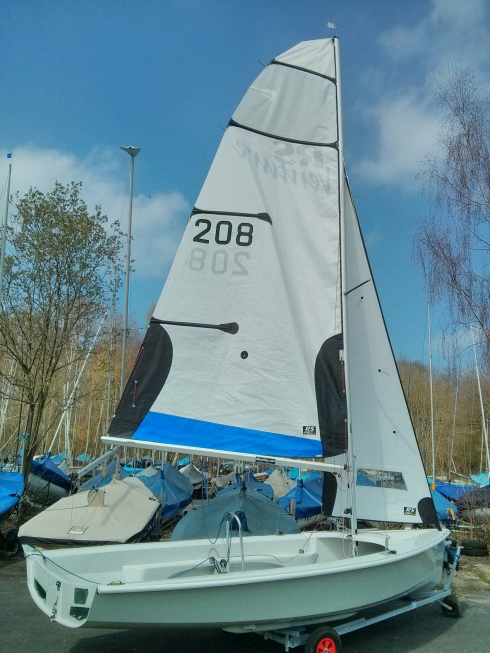Cruising in the RS Venture
The RS Venture is the ideal dinghy for cruising due to its stability, rapid self-draining hull and decent freeboard. However its uncluttered deck and carrying capacity coupled with its shallow draft put it ahead of most rivals.
RS Sailing provide a couple of optional extras that make the Venture even more suited to cruising. These are a rubbing strake and stainless steel cappings for the Venture bilge keels. Whilst not essential these extras will provide useful protection for anyone who does much in the way of cruising.
Engine
RS Sailing recommend a maximum outboard motor of 3.5hp for use with the Venture. An outboard is particularly useful when the wind drops or when manoeuvring in a confined harbour or marina. See the section on Outboard engines for more information.
Navigation
Sailing at night in a small dinghy in busy shipping lanes is to be avoided at all costs but, when cruising, unexpected circumstances can arise that require sailing home at night eg sudden heavy rain, sea mist etc. Battery operated Navigation lights will provide a measure of safety if this happens. Modern LED lights will run for many hours on small batteries. Give thought to a means of mounting such lights either on the stern of the boat (Railblaza offer such mounts) or by hoisting a light on the mast.
Fenders
Fenders are a useful addition when cruising either when mooring alongside other boats or a quayside. Much damage can be done when alongside a quay or pilings exposed to even minor waves if fenders are not available. 'Bigger is better' when choosing fenders but onboard storage should also be considered. Fenders are best stored wedged under the seats and fastened with a strap. A useful additional benefit of a cylindrical fender is that, in extremis, it can be used as a roller to move a boat back to the water when beached by a receding tide!
Fairleads
Fairleads mounted on the hull will come into their own when tying up to a quayside, to other boats or during towing operations. These are also almost essential when anchoring to prevent the warp from damaging the hull and keeping the boat riding to wind.
Towing
If it is necessary for the Venture to be towed or to be used for towing then the standard RYA procedures should adopted to avoid damage to the boat. Whether towing or being towed the main fastening point of the tow rope should be around the mast at deck level. Never the fore and aft mooring rings - these are not designed to withstand the force of towing a heavily loaded boat. Use a properly tied and packed Mooring or Tumble hitch knot to secure the tow rope around the mast and enable its quick release if things go wrong!
If the Venture is being towed then fully raise the centre board, using the rudder as normal to keep the Venture in alignment with the towing vessel. If fairleads are fitted to the bow the tow rope should be passed through one of the fairleads. This has the advantage of preventing damage to the hull by the rope and importantly counters any yawing of the Venture due to wave action and avoids a potentially damaging side pull.
Whether towing or being towed the crew should keep hold of the tow rope and pull in the slack as it develops and release the rope as the slack is taken up. This will prevent potentially damaging 'snatching' forces on the Venture hull and towing vessel and will cause the Venture to ride and turn smoothly behind the towing craft. It is not difficult to achieve this in calm conditions ie when a tow is most likely. In some circumstances eg. in significant waves, the length of the tow rope should be adjusted, if possible, to suit the wave conditions to achieve a smooth ride and reduce the prospect of the Venture running down on to the stern of the towing vessel.
When using the Venture to tow other vessels careful use of the engine is essential if damage to both vessels, and possible harm, is to be avoided. Ensure that the vessel to be towed has its centreboard retracted and the tow rope secured to the mast. When starting the tow the crew should take in the slack and gradually release it as the rope becomes taut. Initially run the engine as slowly as possible to prevent any 'snatch' on the rope. In practice a 2hp engine would be able to tow a loaded vessel of similar size to the Venture with comparative ease with the engine at less than half throttle.
